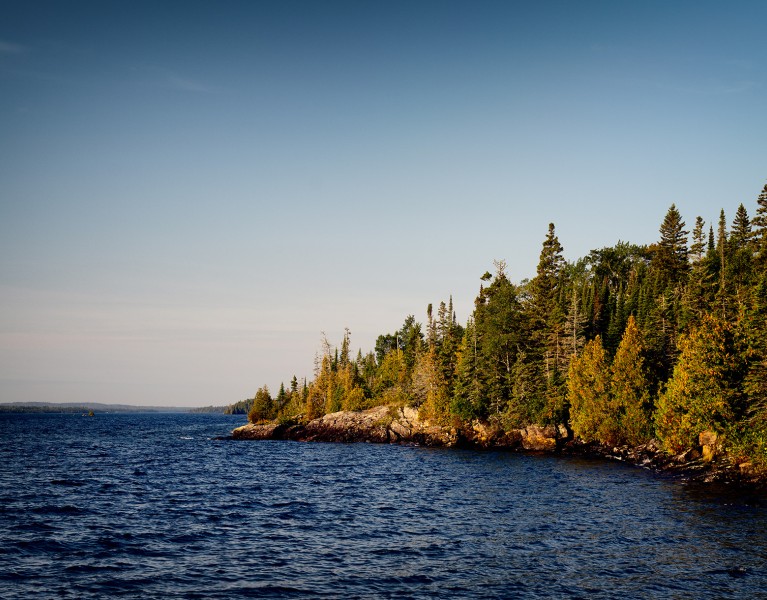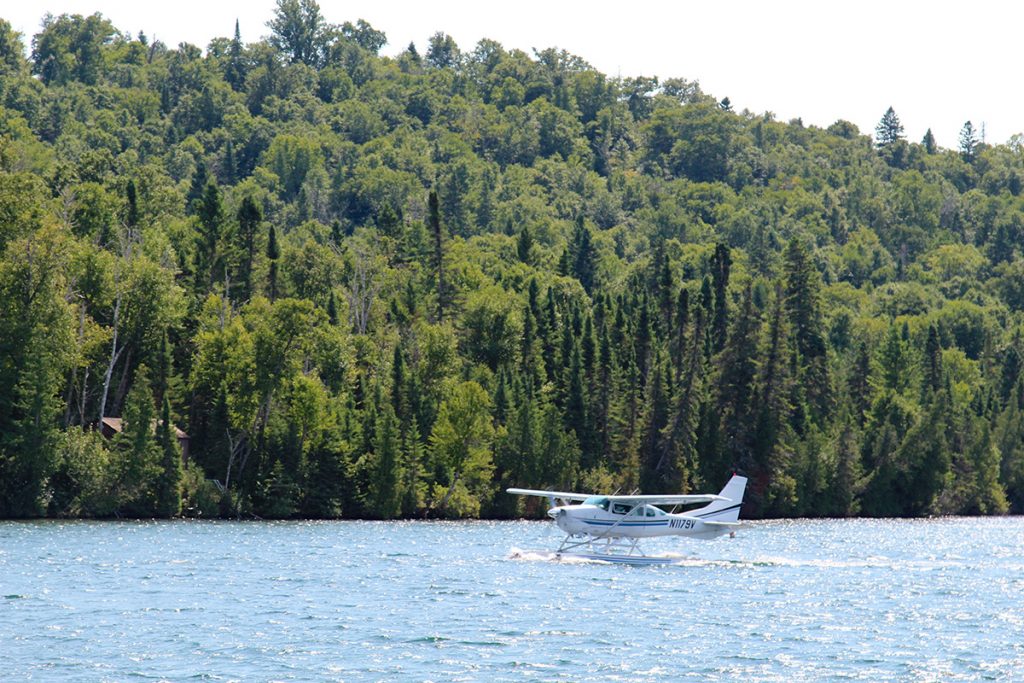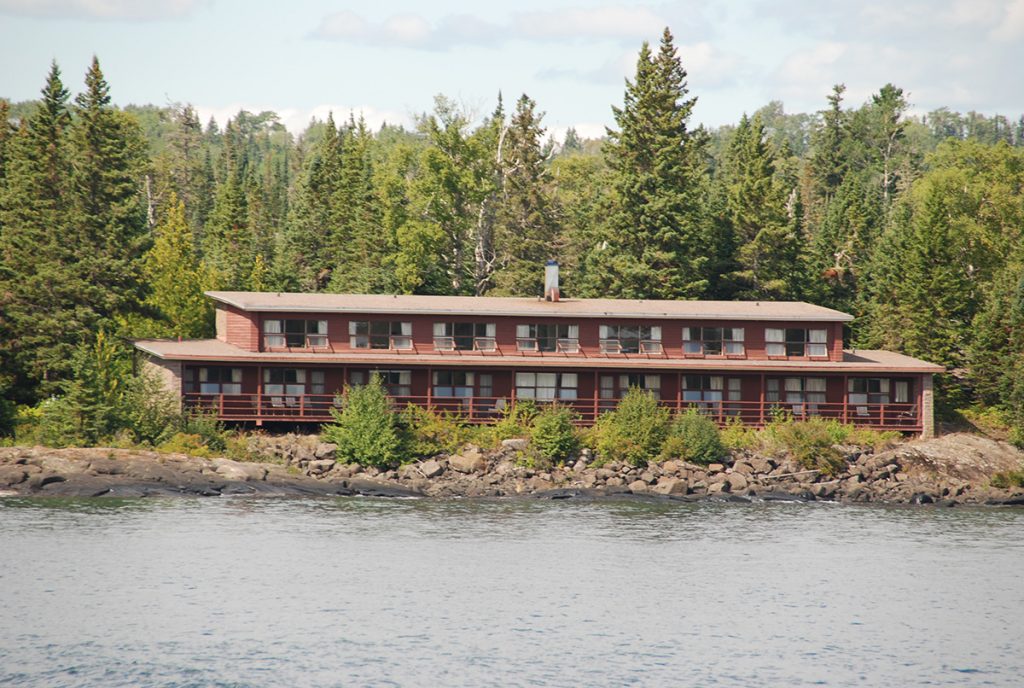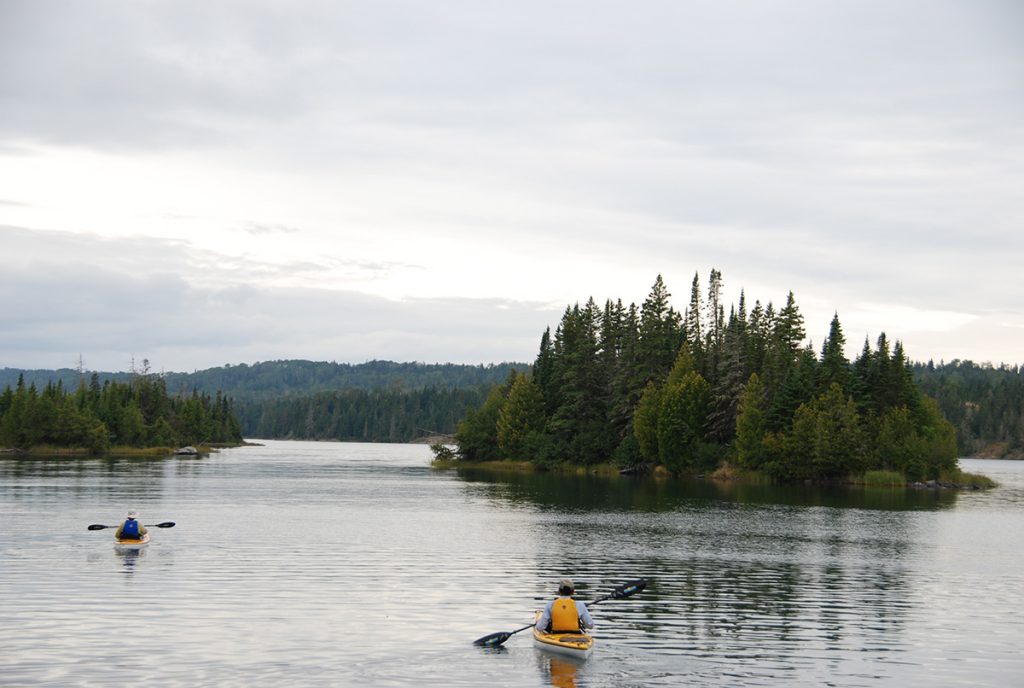
Visiting Isle Royale: A Complete Guide
Table of Contents [Show]
The clear, fresh waters of Lake Superior surround one of the most unknown, yet extraordinary, National Parks known as Isle Royale. This island, surrounded by hundreds of smaller islands, is teeming with untouched nature. Because of where Isle Royale is located, the pristine wilderness and abundant wildlife is unlike anything around. The park is secluded and only accessible by boat or seaplane, making this a perfect place to immerse yourself deep into the forest.
You can access Isle Royale for a quick day hike, but most tend to strap on their backpacks and spend more than a few days exploring the 165-miles of backcountry trails. Expect to encounter moose, otters, rabbits, foxes, loons and possibly wolves while in this region of the North. Isle Royale is for those who are seeking adventure and quietude in a place like no other.
Make sure to take a look at our Essential Outdoor Checklists.
How to Get There
There are at least four different towns you can depart from to access Isle Royale, two are located in Northern Michigan and two are in Northern Minnesota. The only way to arrive on the island is by ferry, seaplane or a private boat.
There are two arrival points on the island, Rock Harbor on the east end, and Windigo on the west end. No vehicles or pets are allowed on the island, so prepare to travel on foot while there. Departure locations include:
- Houghton, Michigan. Houghton is located in the state's Upper Peninsula and is Isle Royale National Park’s mainland headquarters. From Houghton you are able to take either a ferry or a seaplane. The ferry will take about 6 hours and the plane will take 40 minutes.
- Copper Harbor, Michigan. Copper Harbor is located at the tip of the Keweenaw Peninsula and 52-miles north of Houghton. From Copper Harbor you’re only able to take a ferry which will take about 3.5 hours to arrive at the island.
- Grand Portage, Minnesota. Grand Portage is located 150-miles north of Duluth. From Grand Portage you are only able to take a ferry which will take 1.5 or 2 hours depending on which ferry you take.
- Grand Marais, Minnesota. Grand Marais is located 110-miles north of Duluth and offers only transportation by seaplane to Isle Royale. The flight will take 30 to 45 minutes depending on where you’ll be arriving on the island.

Isle Royale charges a $7 per person daily entrance fee to enter or remain within the park, including the day you arrive and the day you exit. You can pay the fee online and in advance to avoid congestion and long waits upon island arrival. If you know your entrance fee will be greater than $60, consider purchasing an Isle Royale Season Pass. The pass covers up to 4 adults (16 and up) for all visits throughout the season.
Where to Stay
Isle Royale is open to all who wish to explore these beautiful lands. With an option of 36 campgrounds, the most popular way people choose to spend their nights is by backpacking and camping from site to site. Each campground offers a tent site, a water source and an outhouse. They’re all on a first-come-first-serve basis and require a free permit that can be obtained in Rock Harbor, Windigo or aboard a ferry. This permit is separate from the entrance permit, and you must obtain both if you wish to stay overnight on the island. If you are traveling with a group of 7 or more people you will need to have an advanced reservation and pay a permit fee.
You also have the option to camp outside of any designated campgrounds. Camping outside of Isle Royale National Park's permitted campgrounds is known as cross-country camping. Cross-country camping is for visitors who want to have more privacy, adventure and low-impact camping in the countryside. Cross-country camping is advised only for experienced backpackers or paddlers who are familiar with Isle Royale. It is not meant for overflow camping or to decrease travel between campsites. The landscape is harsh, with several marshes and dense vegetation. For individuals who have never cross-country camped before, day hiking off-trail may be a better option.
If you’d rather not camp or just want to spend one night in a comfortable place, then you could reserve a room at the Rock Harbor Lodge complex or at one of two rustic camper cabins available in Windigo. These facilities offer plenty of amenities including showers, local stores, canoe rentals and much more.

Things to Do
Hiking
With 165 miles of trails to explore, there are plenty of hiking opportunities. The majority of journeys begin at either the Windigo Visitor Center on the island's southwestern end or the Rock Harbor Visitor Center on the island's northeastern end.
- Still Trail to Scoville Point. This is a smooth 4.2-mile trail that brings you along the iconic shoreline and a truly magical place to begin your journey on the island.
- Minong Ridge. This 6-mile round-trip hike climbs steep ledges through pine forest and lowers into marshes teeming with beavers and moose, opens up to a beautiful vista of flat-topped Pie Island and the Canadian shoreline for those seeking excitement on the southwestern side.
- Ojibway Fire Tower. Hikers can visit the Ojibway Fire Tower on the northeastern end for something a little different. Starting at Daisy Farm Campground, this hike can be done as a 3.5-mile round trip or a 5.1-mile loop. This trail ascends and descends many ridges to reach the highest point on Isle Royale's eastern end. The former fire tower now houses scientific instruments that support a national atmospheric monitoring program.
- Greenstone Ridge. Hiking the full 40-mile Greenstone Ridge Trail that runs across the spine of the thickly forested island is the greatest way to understand the park's real untamed nature. During this four-day, three-night climb, you'll cross Mount Desor, the island's highest point at 1,394 feet.
Fishing
Isle Royale is truly an angler’s paradise. You can fish Lake Superior or the inland lakes for any one of the documented 40 species, including lake trout, brook trout, whitefish, northern pike, yellow perch and walleye. The fishing opportunities are endless on the island, whether it's by boat, canoe, kayak or even on foot.
Canoeing/Kayaking
With its various lakes, bays, and islands, Isle Royale offers expert canoeists and kayakers miles of scenic waterways. The extensive miles of waterways provided by the inland lakes are encouraged to be used by small, open vessels. To negotiate wide bays and avoid swamping in rough water, canoes should be at least 15 feet long. It's best to use sea kayaks for the marine environment of Isle Royale, as recreational kayaks are not suitable.
For open water, sea kayaks should be at least 15' 8" to 19' length and stable in the wind and waves. Paddling safety in these waters is incredibly important and should always be considered before venturing off into the waters. For more information regarding safety conditions, visit the Isle Royale National Park website. Canoes and kayaks are in limited supply and are available to rent in both Rock Harbor and Windigo.

Scuba Diving
If you’d like to get in the cool waters of Lake Superior, then Isle Royale is an exciting place to explore. Throughout the years, over a dozen major shipwrecks have occurred in this area due to the hazardous, rocky waters. These shipwrecks, most fully intact, have created a unique opportunity for those who want to dive deep, learn and explore the depths of Lake Superior. Scuba diving here is recommended for those only with experience.
Wildlife Viewing
The ability to get up close and personal with nature is unrivaled on Isle Royale (just remember to not get too close). Moose munching in trailside wetlands, loons bobbing along with chicks in tow and, if you're really lucky, the mystical howls of wolves, are among some of the wildlife encounters you might have. Besides moose and loons, the most commonly viewed animals in Isle Royale National Park are snowshoe hare, beaver, red fox, river otter and the bald eagle. You'll have a chance to take some spectacular wildlife photos, but always remember to use caution and stay far away from any wildlife.
Extra Tips for Your Isle Royale Trip
- Isle Royale is a popular Michigan destination for Boy Scouts and groups. Book travel well in advance as large groups will fill up the limited seating on ferry boats.
- The waters of Lake Superior are cold and frigid. Even in the summers the island can be cool, so pack accordingly and bring some extra warm gear for overnight stays.
- Access to emergency services is incredibly limited. Pack a first-aid kit, bring any necessary medications, and practice basic survival skills before your trip.
- There are several invasive species in Lake Superior. It helps to empty any residual water and wipe down the outsides of all crafts that are portaged.
- Bring extra snacks! Meals should be compact, nutritious and varied.
- Take time to relax. Being on the island for only a few days may trigger you to go exploring as much as possible, but the isolated location also brings a fantastic opportunity to just kick back and relax. Bring a book, listen to music, or simply meditate.
- Expect the unexpected. No matter how much you plan your trip, things will change. Maybe you don’t get to see all the things you wanted, or maybe the weather is unjust. No matter the change though, prepare to embrace it!
The fresh waters of Lake Superior give life to a spectacular island that holds endless adventures. Isle Royale National Park is a magical oasis, providing its visitors with true peace and quiet in the great outdoors. Respect the island as if it were your own home by leaving no trace and packing out anything you pack in. Enjoy observing the wildlife, floating along the coast on a canoe, hiking many miles and sleeping under the stars.
Featured image - Lake Superior Shore at Isle Royale NP, as seen from the Rock Harbor docks. Photo by Tony Webster.


